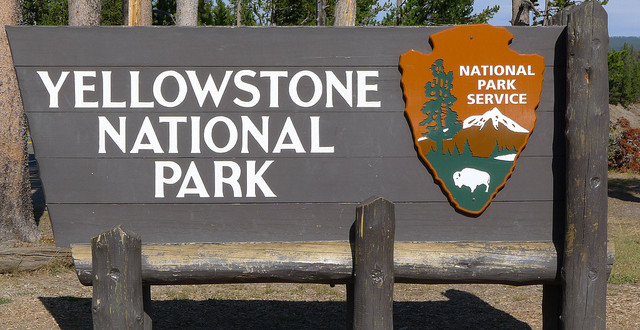Since the last National Park Service fee hike, Yellowstone and Grand Teton National Parks have sold more all-parks passes than any other in the National Park System.
The news offers some hope that the Department of the Interior’s proposal to raise the individual entrance fee could spur more Interagency Annual Pass purchases.
According to the Bozeman Daily Chronicle, sales of Interagency Annual Passes have doubled at Yellowstone and Grand Teton since 2014. Costing $80, the pass gets visitors into any national park in the United States. The Chronicle also reports that the sale of $60 annual passes to individual parks have dwindled.
Last month, we reported the DOI was considering instituting “peak season entry fees” to 17 national parks, including Yellowstone and Grand Teton. The proposal would raise the weekly entrance fee for vehicles from $30 to $70. The DOI also wants to raise the motorcycle fee from $25 to $50 and the individual person fee from $15 to $30.
“Peak season” generally means late spring to early fall. For Yellowstone and Grand Teton, peak season runs from May 1 to September 30.
The National Park Service is still seeking public comment on this proposal. You can either submit comments through the Planning, Environment, and Public Comment (PEPC) website or submit written comments to the following address:
National Park Service
Recreation Fee Program
1849 C Street, NW, Mail Stop:
2346 Washington, D.C., 20240
The DOI and National Park Service say fee increases are necessary to help address the maintenance backlog in the national park system, which is estimated at $12 billion. Indeed, a pair of visitor use and traffic studies in Yellowstone predict that the park’s roads could become terminally poor by 2023 unless there’s a dramatic alteration to traffic.
Many groups have spoken out against the fee increase, arguing it would price too many people out of visiting national parks. Even organizations like the National Park Conservation Association, which have favored fee increases in the past, argue the hikes are too high.
On the surface, the increase in Interagency Annual Pass sales following a hike in daily/weekly fees makes sense. The $80 all-park pass gets you more bang for your buck than a $70 individual pass would, should the NPS decide to raise fees. The Interagency Annual Pass also makes more sense for Western residents who have more national parks near them than other parts of the country.
According to the Chronicle, however, it’s not clear whether this latest round of fee hikes would increase interest in the Interagency Annual Pass. It’s also not clear how the fee hike would help the NPS as a whole, since parks keep the majority of fee payments and infrastructure is a system-wide problem. From the Chronicle:
“That’s one thing we don’t have,” said Christine Williamson, of the National Park Service. “No strong data on essentially visitor behavior and what the tipping point is.”
[…]
Not all national parks charge entrance fees. Those that do keep 80 percent of the revenue while the other 20 percent goes back to the agency.
John Garder, of the National Parks Conservation Association, said that 20 percent isn’t doled out evenly between the parks, which creates the possibility that some parks won’t see the boon of a fee increase if more people purchase an interagency pass.
He gave the example of someone going to Grand Canyon National Park and then going to parks in southern Utah.
“They buy the pass at Grand Canyon, and Utah doesn’t get anything to speak of,” Garder said.
The same could happen at Yellowstone and Grand Teton. Prior to 2015, $50 could get a visitor an annual pass to both parks. In 2014, Yellowstone sold 11,351 of those passes. Grand Teton sold 7,424.
In 2015, the parks began selling only individual park annual passes. Those sales tanked. So far this year, Yellowstone has sold 6,924 annual passes and Grand Teton has sold 1,907.
But the sale of interagency annual passes have ballooned since 2015. Grand Teton has sold 24,116 interagency annual passes this year, compared to 9,591 in 2014. Yellowstone has sold far more: 38,632 compared to 18,799 in 2014.
Under this paradigm, according to the Chronicle, Grand Teton doesn’t receive anything from the sale of an Interagency Annual Pass at a Yellowstone entrance. The Chronicle points out that Grand Teton has received more visitors than Yellowstone in recent years; in 2017, 4.8 million people visited Grand Teton while 4.2 million visited Yellowstone National Park.
Williamson notes the majority of NPS revenue still comes from daily and weekly passes. She also says the agency is considering a “more holistic fee analysis.”
Shawn Regan, research fellow at the Property and Environment Research Center, told the Chronicle the NPS should consider relying more on visitor fees instead of Congressional appropriations for funding in the future, arguing visitor satisfaction is more consistent than political currents. However, Regan fears a fee increase “could have the overall effect of reducing fee revenues for other parks.”
 Yellowstone Insider Your Complete Guide to America's First National Park
Yellowstone Insider Your Complete Guide to America's First National Park





